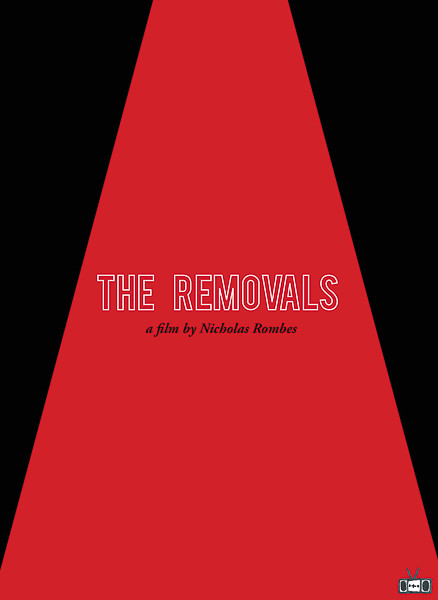By Madi Tortora
Contributor
And Sofia Lynch
Managing Editor
When Nicholas Rombes, an instructor at the University of Detroit, was a child, he always had a fascination with film. A production company out of Columbus, Ohio – Two Dollar Radio – helped Rombes to realize his dream by commissioning his screenplay. Because he is the husband of a Washtenaw Community College math instructor, Lisa Rombes, students and faculty members of WCC got to experience that dream with him.
Nicholas had worked with Two Dollar Radio previously, on his novel “The Absolution of Roberto Acestes Laing.” For “The Removals,” his first movie with the production company, he was given a very tight deadline for turning around the screenplay.
“He (the publisher) said, ‘You know, we need to make a decision on the film to make, if you could get the script in three weeks, you could be in the running.’ And that was really helpful to me to have a deadline. It was crazy but all the stuff that I had been doodling and thinking about had a reason – to put it all together,” Nicholas said.
“So that’s when everything kind of coalesced. We really began thinking like okay, if we are really gonna shoot a movie for $20,000…how would the script actually look? And that’s when everything really came together, when I had the budget and I had three weeks.”
That deadline resulted in Nicholas’ first movie: a lo-fi sci-fi short film called “The Removals.” Lo-fi sci-fi stands for low fidelity science fiction, which is described as a sci-fi genre that focuses more on big ideas rather than big budgets and fancy effects.
The title of the movie refers to one of the main groups of characters who figured out that they can remove something that happened in the past, and replace it with something different if they reenact the scene, according to Nicholas.
“Their initial goal was very utopian: that they wanted to kind of take out the bad parts of history… and sort of replace what really happened, almost like you’re recording over a tape. They started good, but like every utopian, there’s a dark side,” Nicholas said.
“Some of them are starting to use this for a bad purpose and then these two people- who are the removers, that’s what they call the people – decide to kind of break away.”
There are cones throughout the movie that Lisa explained as the communication nodes for the removers. These prop cones were planned to be made of cardboard, but the team realized they wouldn’t last through all the scene changes or rainy days.
Lisa had the idea to enlist the help of the WCC Welding Department to alleviate their prop dilemma. She called the Welding Department head, Glenn Kay II, to see what they could do.
Full-time welding faculty member, Brad Clink, took on the cone project because it worked well as a class assignment for his shape cutting class. Clink’s students created a program that would cut out the flat cone shape which would then be rolled up.
“They did a lot of trig on those things,” Clink said.
Not only did their contributions of making the cones earn them a prop credit, but it also gave the class a real world example of the importance of their curriculum.
“Sometimes class material just gets tedious, like where do we use this in real life? It’s good to be like here is a real life situation, when you guys are finished with this piece it is going to be used,” Clink said. “They were definitely much more attuned to that, like, ‘Oh man if we mess this up, our names are on this.’”
The impromptu prop creation would be one of many change of plans for “The Removals” production – from spontaneous additions of scenes to accommodate a nearby parade, to a changing of scene locations causing a WCC faculty member to fill a role that could have possibly gone unfilled.
Most of the movie was shot in Columbus, but Nicholas had his heart set on one of the final scenes being in a hotel in Ann Arbor. The actress originally cast for the scene couldn’t travel to the new location, so they had to adapt quickly. Lisa’s co-worker, Kristin Good, dean of mathematics, science and engineering technology, seemed to be the perfect fit.
“She (Lisa) sent me an email one day and said she had an opportunity for me. She said, ‘There’s a part in the movie that we need someone for and Nick thinks you would be perfect for it,’” Good said. “So, they sent me the script and what not and I said ‘OK, I’ll do it. Why not?’”
Lisa Rombes explained that for the most part, when casting for indie movies, “You have to pull together people out of nowhere.” The Rombes’ daughter even had a small part and Lisa almost had a role in the film as a shopper in a thrift store, but her scene ended up on the chopping block.
“But in another scene, there’s a polaroid of me that falls on the ground, so I’m literally on the floor,” Lisa said.
The whole cast wasn’t completely spontaneously assembled, however. The main characters of the film, Kathryn and Casey, were played by professional actors Milly Sanders and Andrew Sensenig respectively.
The production experienced several delays – like the pregnancy of the original main actress and director switches – and ended up taking three years from the initial screenplay deadline.
“You know there were times when we thought, ‘Oh is this actually going to happen?’” Lisa said. “And then once the plane tickets were bought for the professionals, it was like, ‘Okay, guess we’re doing this.’”
The film has since been finished and has been entered into Sundance Film Festival. Lisa explained the process of entering film festivals to be like college applications. For Nicholas, like his original screenplay deadline, entering his film in a festival made him put pressure on his standards.
“Knowing that it wasn’t just going to sit around, that it was going to actually be seen by people, it’s a motivating factor,” Nicholas said. “When you write a book or a novel, it’s very private unless someone emails you, but most of the people who read it, you don’t really know what they thought. For the movie, the experience of having an audience of people watching it is a lot different. There’s higher stakes.”
Above all, this film buff just wanted to give back to the movie world what it had given him.
“When I was younger, I just got sucked into the world… I almost felt like I knew or I identified more with the characters in film than almost in real life sometimes, and then as I got older, I wondered “How does that happen, like how is that possible?” Nicholas said. “I started thinking about if I could pull that off. I think that was the initial thing, to try and give it back, like give a gift.”


